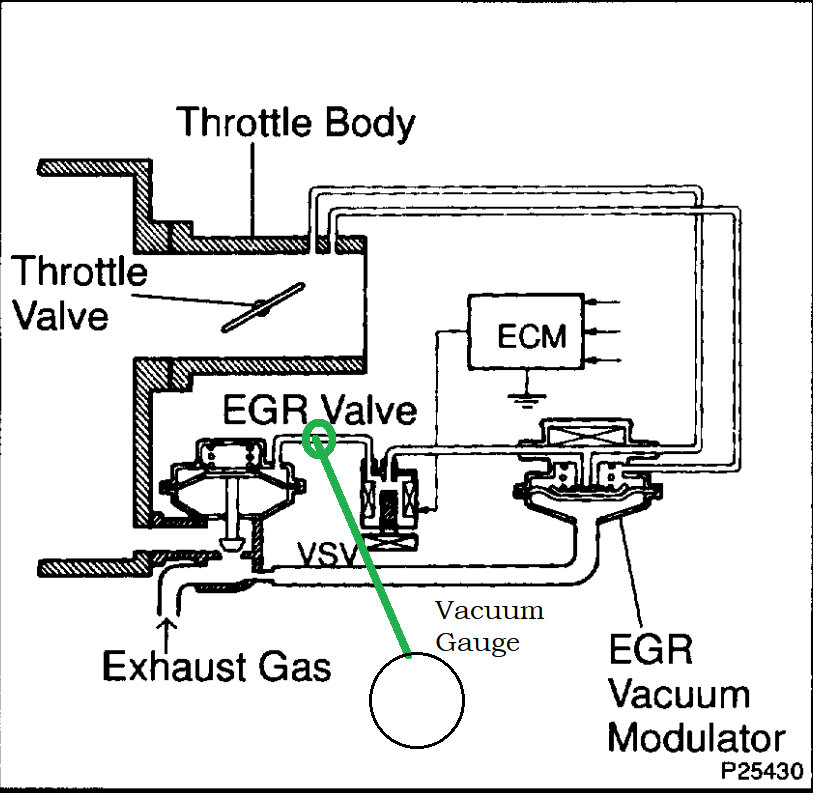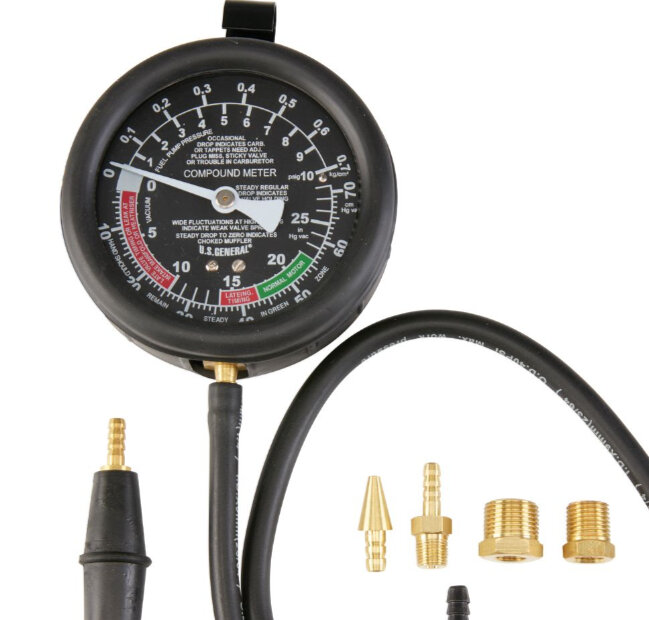Hello, did you inspect the passage into the intake manifold when you had the old EGR valve off for any carbon build up? and the tube that runs down the exhaust for the EGR system, is that after the Catalytic converter on this car? If I remember correctly the converter is almost part of the exhaust manifold on this model, I believe there are two converters on this vehicle. One that's attached to the exhaust manifold and one that is about mid-way down the exhaust. It might be that one of the converters is failing and there is insufficient exhaust flow for the EGR valve. I know there are a few different designs of this model. Do you have a front Oxygen sensor in the front of the engine right below the exhaust manifold? you can do a back pressure test at that location, you can also take a look at live engine data and see what the rear oxygen sensor voltage is, compared to the front oxygen sensor. Ill post some more service info as well
You can also hook a vacuum gauge up to the hose that runs to the EGR valve from the solenoid and rev the engine up quickly after its fully warmed up and see if the solenoid activates and you get a vacuum reading. Looking at the exhaust system, I don't see exactly where the tube for the EGR valve comes from, but if the catalytic converter has broken apart and restricting the exhaust that can cause both codes, doing a back pressure test at the front oxygen sensor location would tell you if the exhaust were restricted.
Most basic vacuum gauges will read up to 10psi positive pressure as well, and this is plenty to see if the exhaust is restricted.
This is a regular vacuum gauge from harbor freight, you can see it will read vacuum down to 25inhg but also read up to 10psi, if you remove the front oxygen sensor and adapt this gauge to that opening, and start the engine, you should have no more than 1 to 1.5psi of back pressure, this is a quick test to check for a restricted exhaust. Just don't use the rubber section of this gauge in the exhaust hole. It will melt very fast, so make some kind of metal adapter to take a quick measurement.
If the exhaust is restricted it can affect the EGR valve because the EGR allows a small amount of exhaust gases into the intake manifold to bring cylinder temperatures down, reducing the NOX gases, for emissions purposes
https://www.2carpros.com/articles/how-to-test-a-catalytic-converter
https://www.2carpros.com/articles/how-emission-control-systems-work
Images (Click to make bigger)
SPONSORED LINKS
Thursday, August 3rd, 2023 AT 11:02 AM






